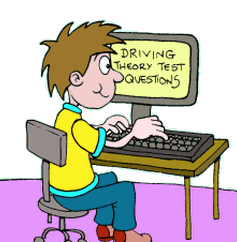Risk factors when driving: snow and ice
When the snow is falling, there is one big problem - it is hard to see far infront. So like fog, reduced visibility is the problem with snow. And when there is heavy snowfall it can be very hard to see any distance at all.
You should use dipped headlights even in daylight to help you see and other road users be aware of your presence too. If snow is on the windscreen then you might need to get out of the vehicle and remove it. It is important to do this in heavy snow before it settles down and is impossible to remove.
Drive sensibly and as with fog you should slow down and increase the gap between yourself and the car in front; this is because with reduced visibility you will have less time to react to anything untoward therefore by driving more slowly and increasing the gap you help to compensate and get that necessary time gap back.
Another point to note is that it makes sense to check your brakes periodically are still workiny by testing them gently, because the braking can be affected if snow gets in to the brake linkages.
Related Articles...
Your vehicle and driving
There is a lot to take in when you are learning to drive and when you are preparing for the driving theory test. Whilst a lot of it is common sense there is a considerable amount of information you...
Reversing Exercises in the driving test
There are three reversing exercises that you could be tested on in the driving practical test.
You will be asked to perform two out of these three so that the person undertaking your test (the...
Typical brake faults outlined
The brakes are a mechanical object and so it is possible that they will develop problems and not function the way that they should be. This is clearly very dangerous because brakes are one of the...
Vulnerable road users - pedestrians
Pedestrians whether old or young are all potentially vulnerable. Any impact at all on a pedestrian is potentially fatal, and that goes for a pedestrian of any age.
Of course within the class...
The Advanced Driving Test
There are advantages to continuing to study driving by means of a course like the advanced driving test, because it will help to give you the chance to develop your skills even further than you had...
What are driving offences
Driving offences are what happens when you do not meet your obligations as a road user.
This could be something like not having the correct documentation that you require or something much...
What to look for when you see a vehicle
Here is a simple check list of things to take into account when you check a used vehicle that you are considering purchasing.
Firstly, look at the engine carefully, and see if you think it has...
Hazard Perception
There has been a significant increase in the focus of hazard perception and hazard awareness in the last few years since the introduction by the DSA of a separate hazard perception element to the...
How to book your driving theory test
There is now an online booking system in place that will allow you to book a driving theory test online.
There are also other ways to book a driving theory test: over the phone and you can...
Switching to driving an automatic
When you switch to an automatic car it could be for a wide range of reasons. Of course number one on that list could be that you are simply given an automatic car or you are driving in a country...
Back to home page of driving theory test questions

